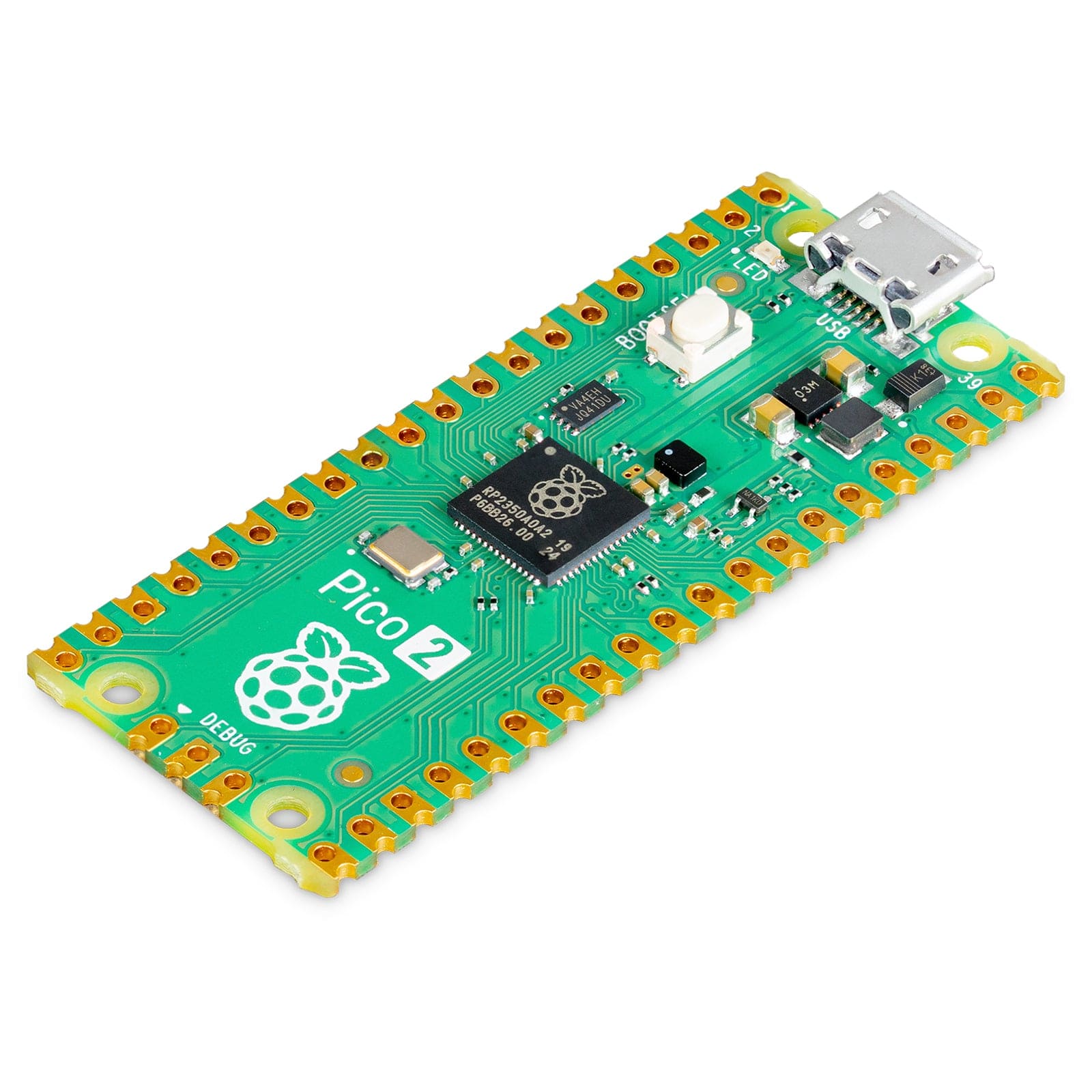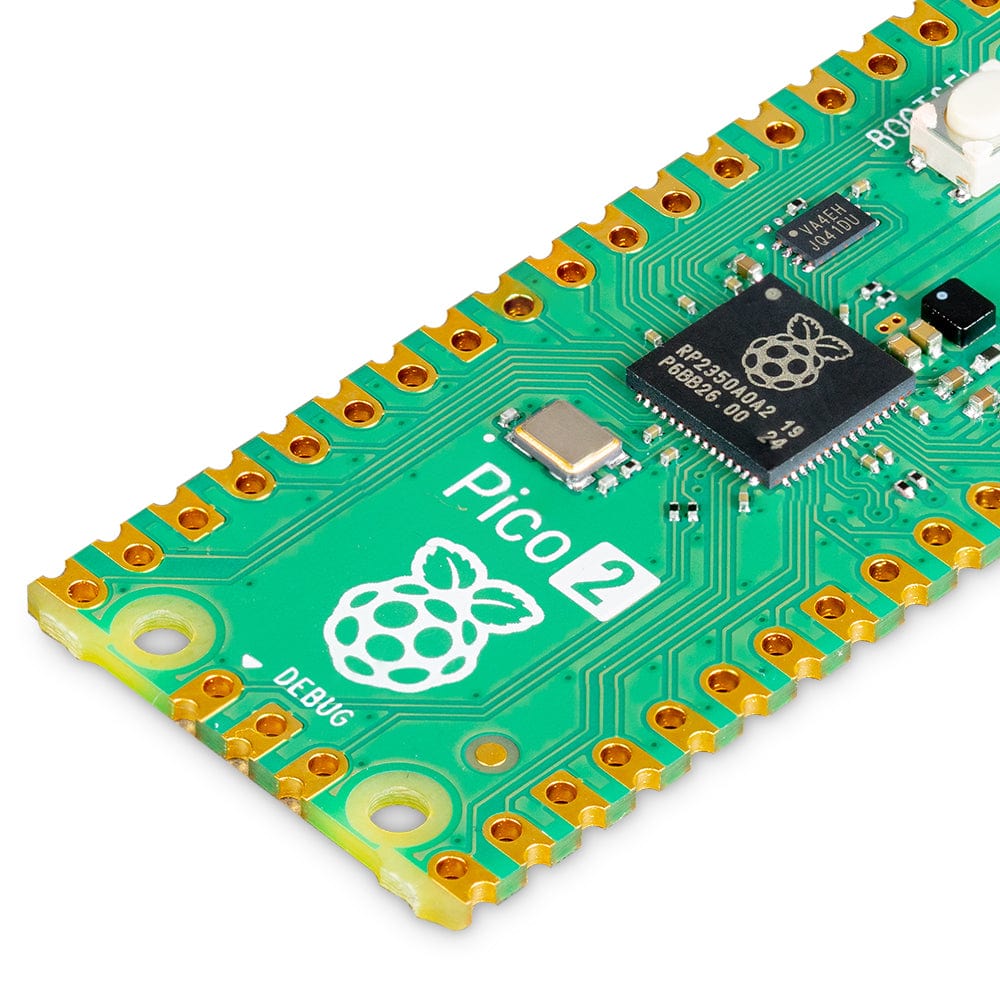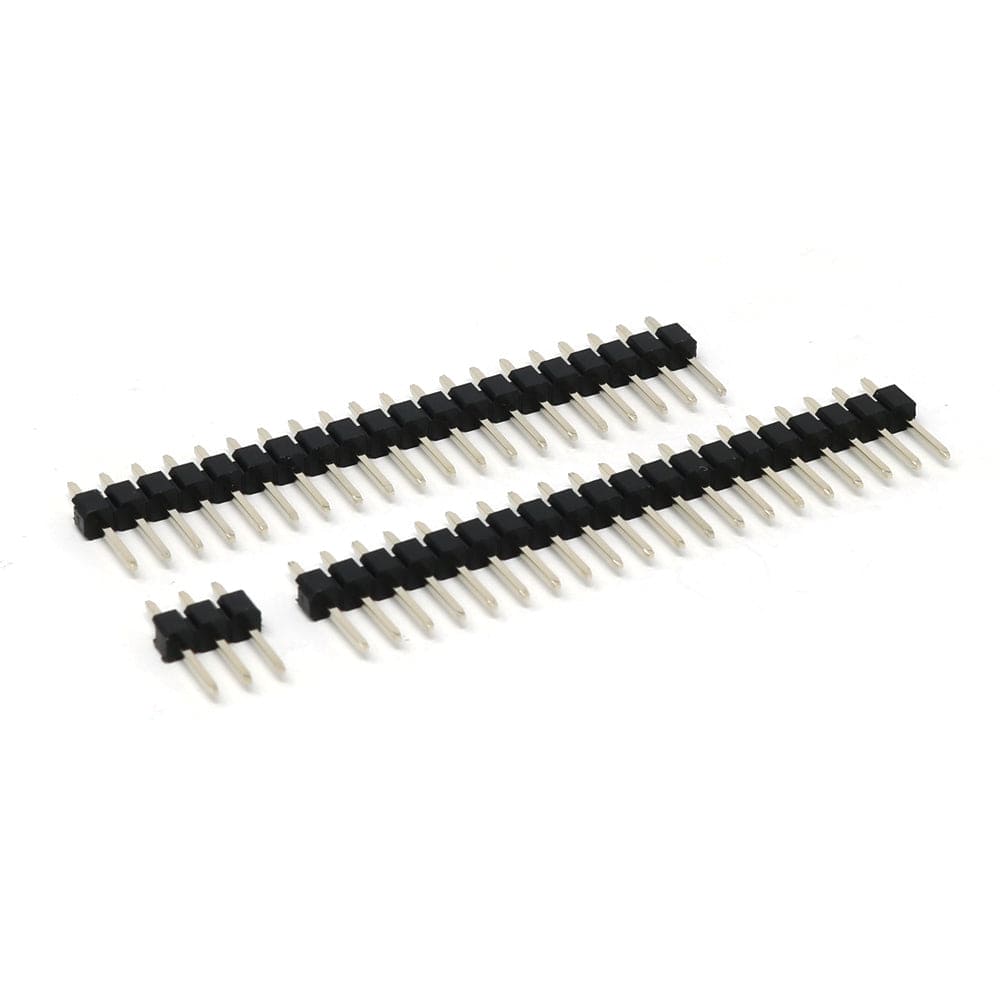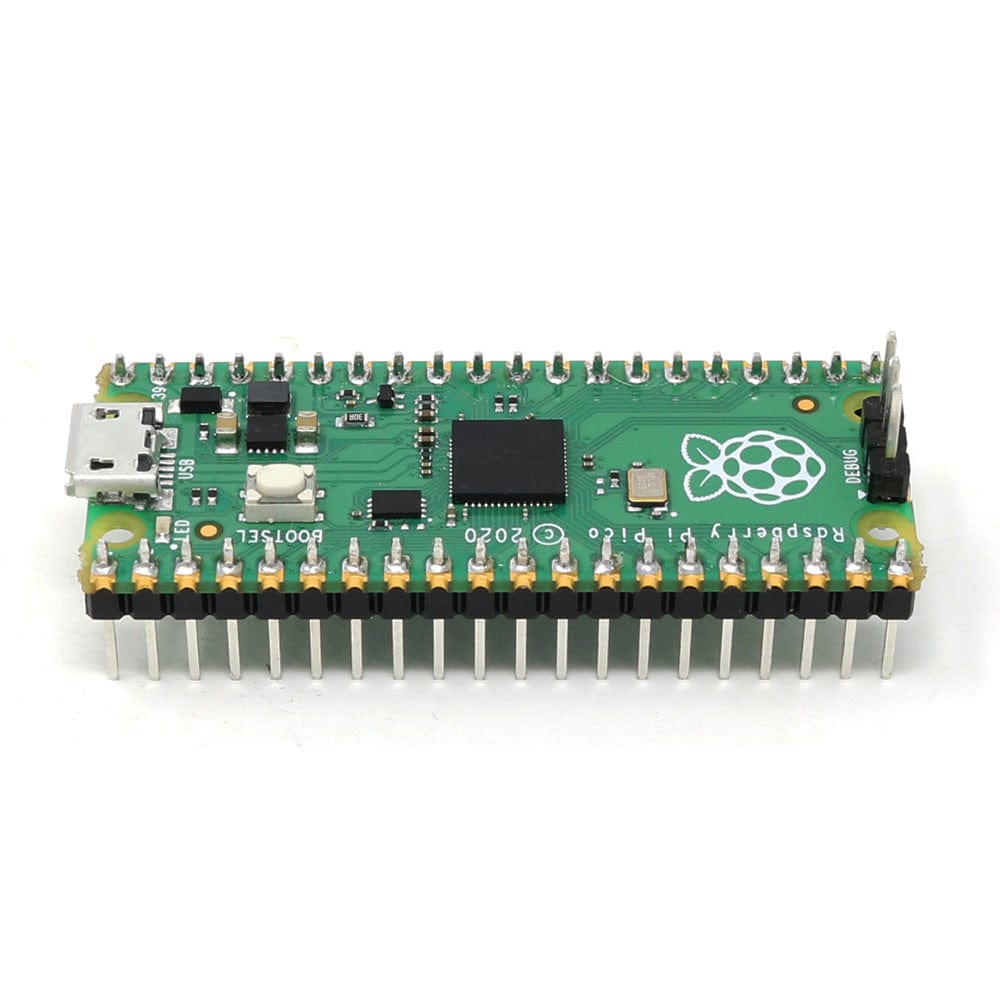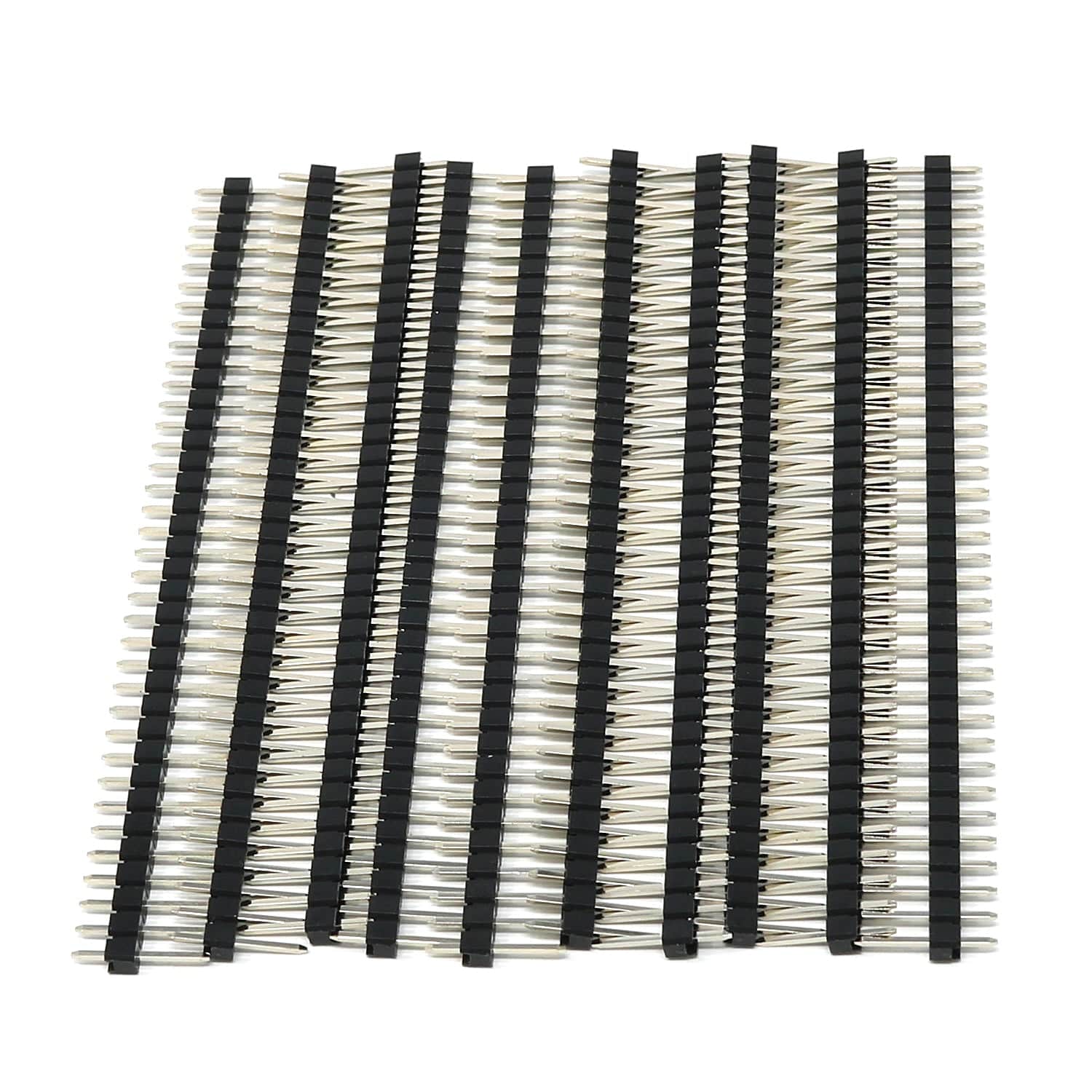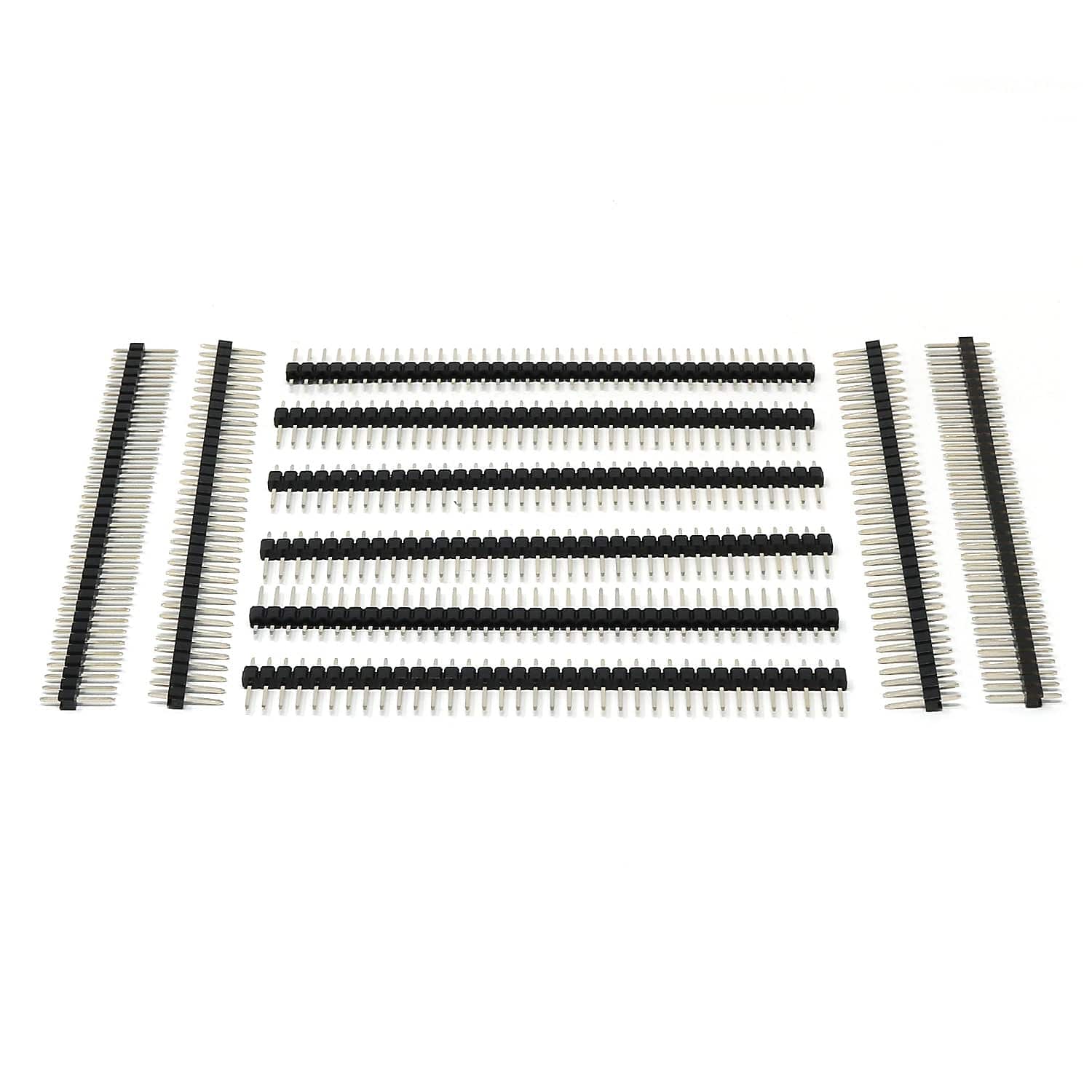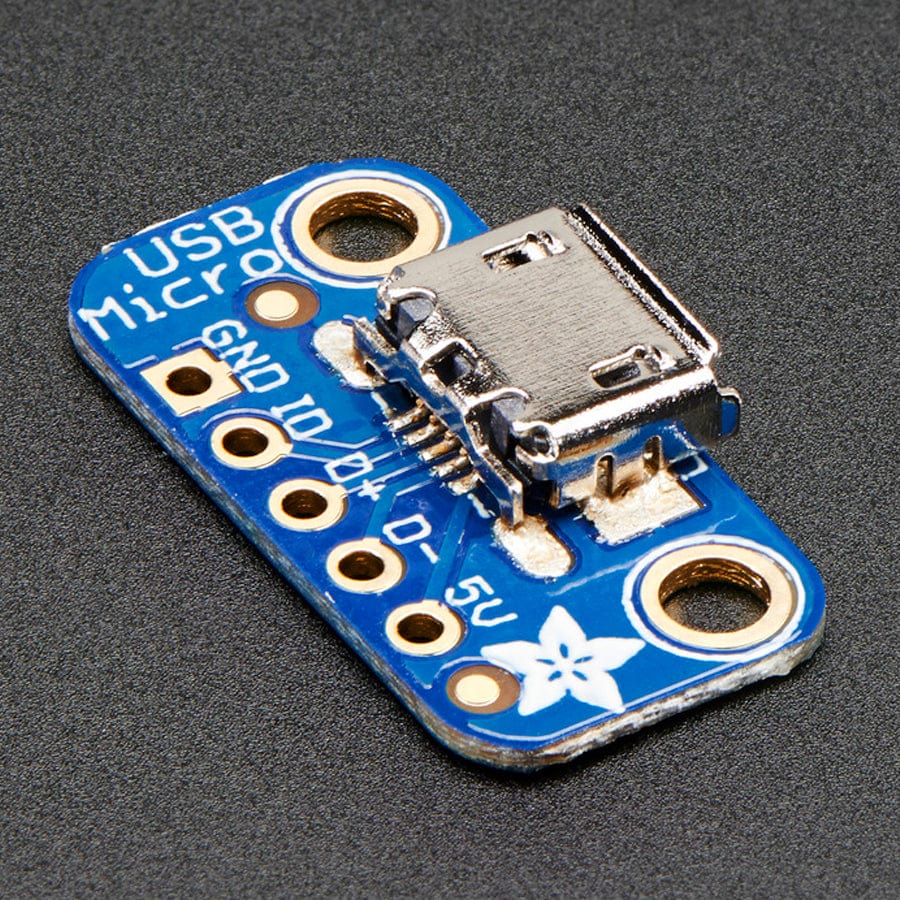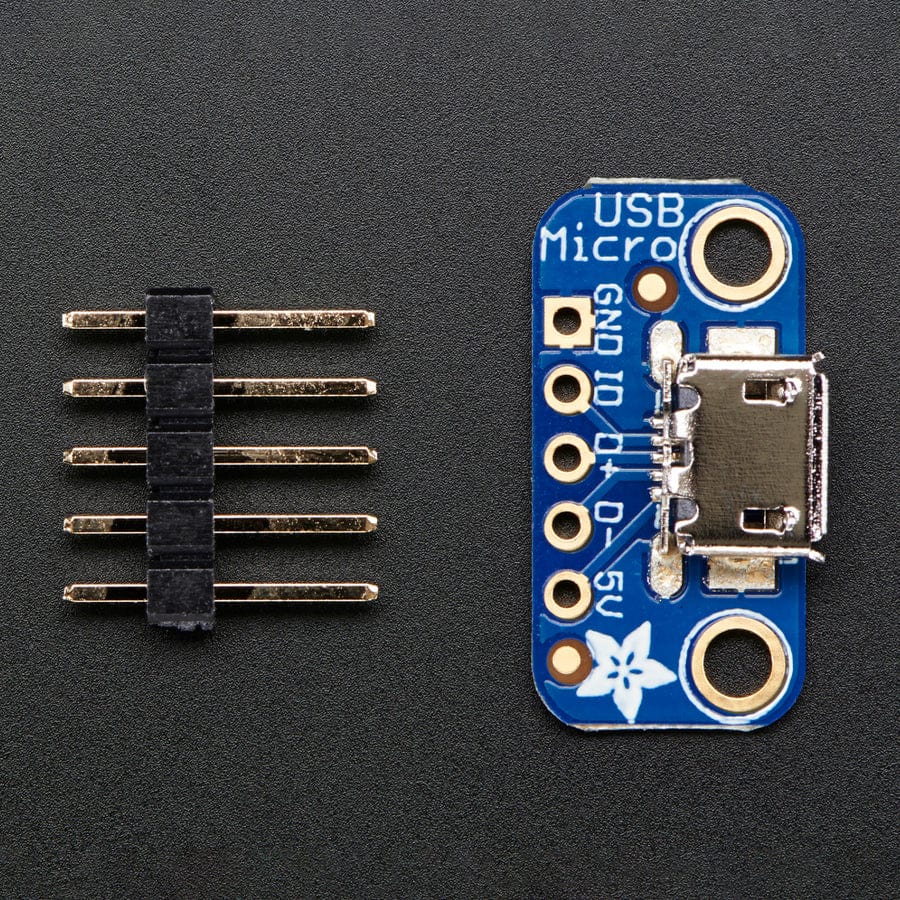
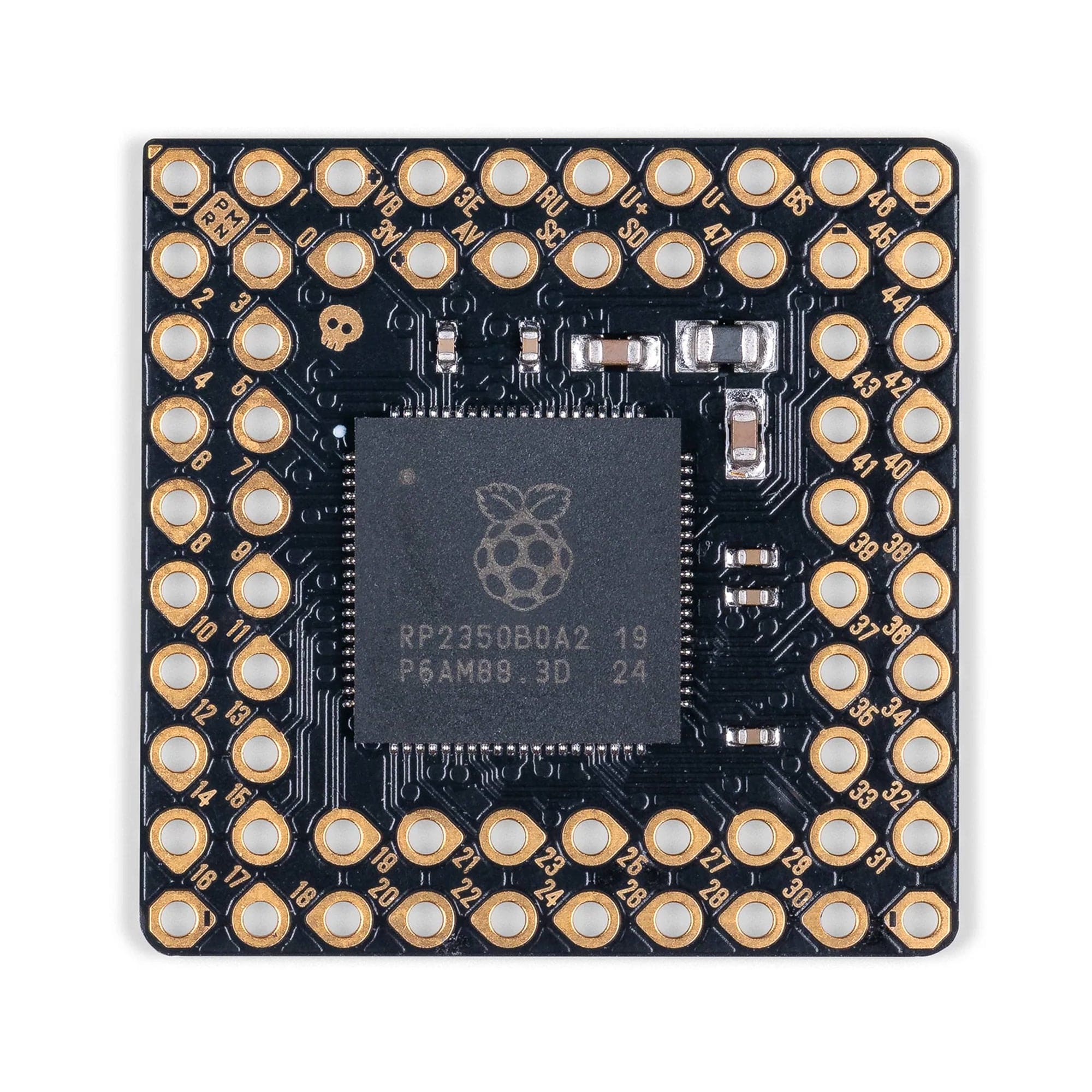
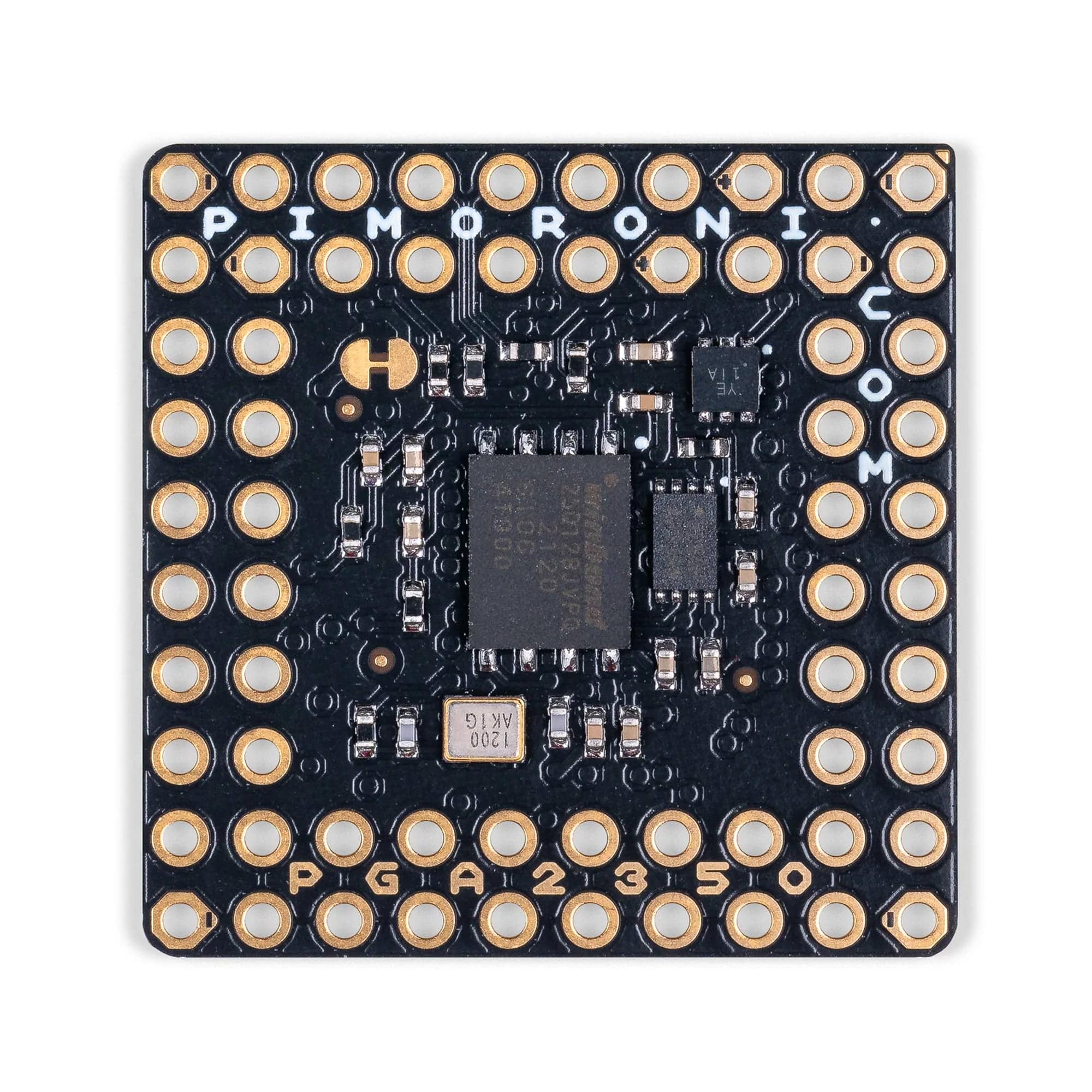
Login / Signup
Cart
Your cart is empty
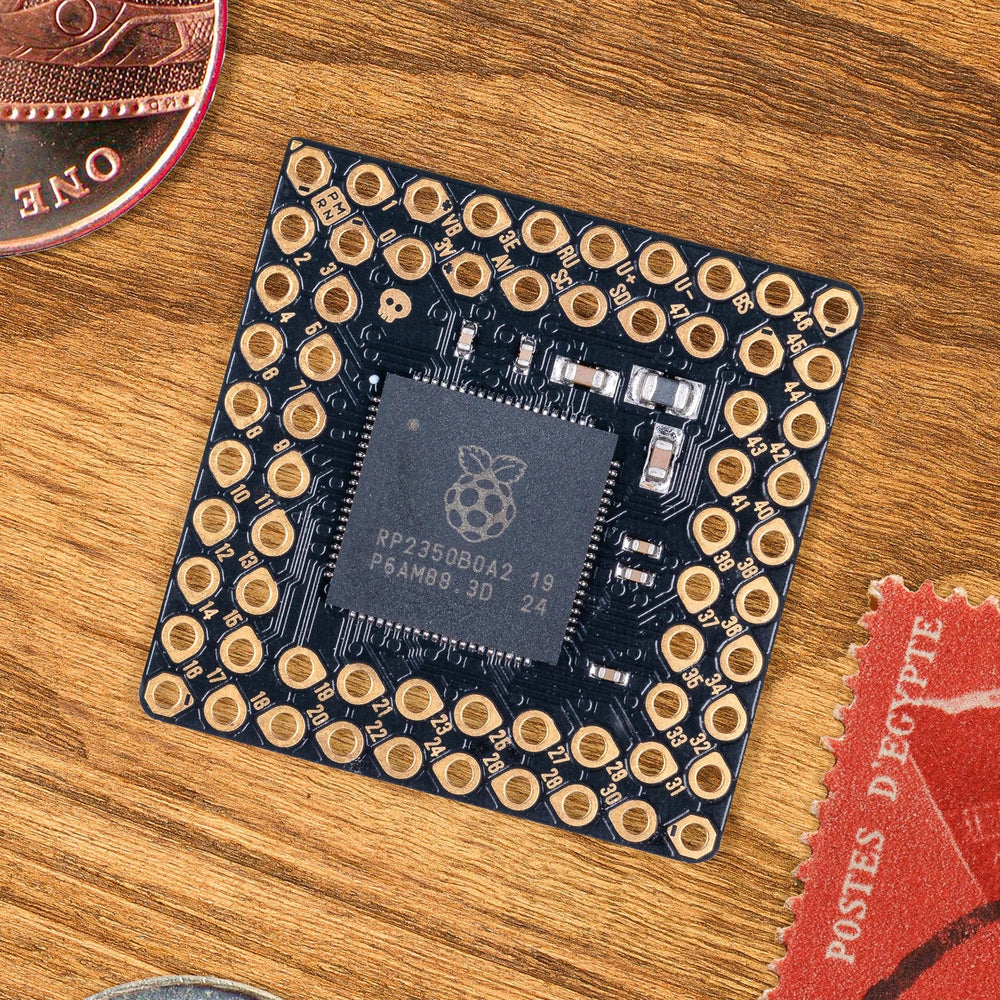
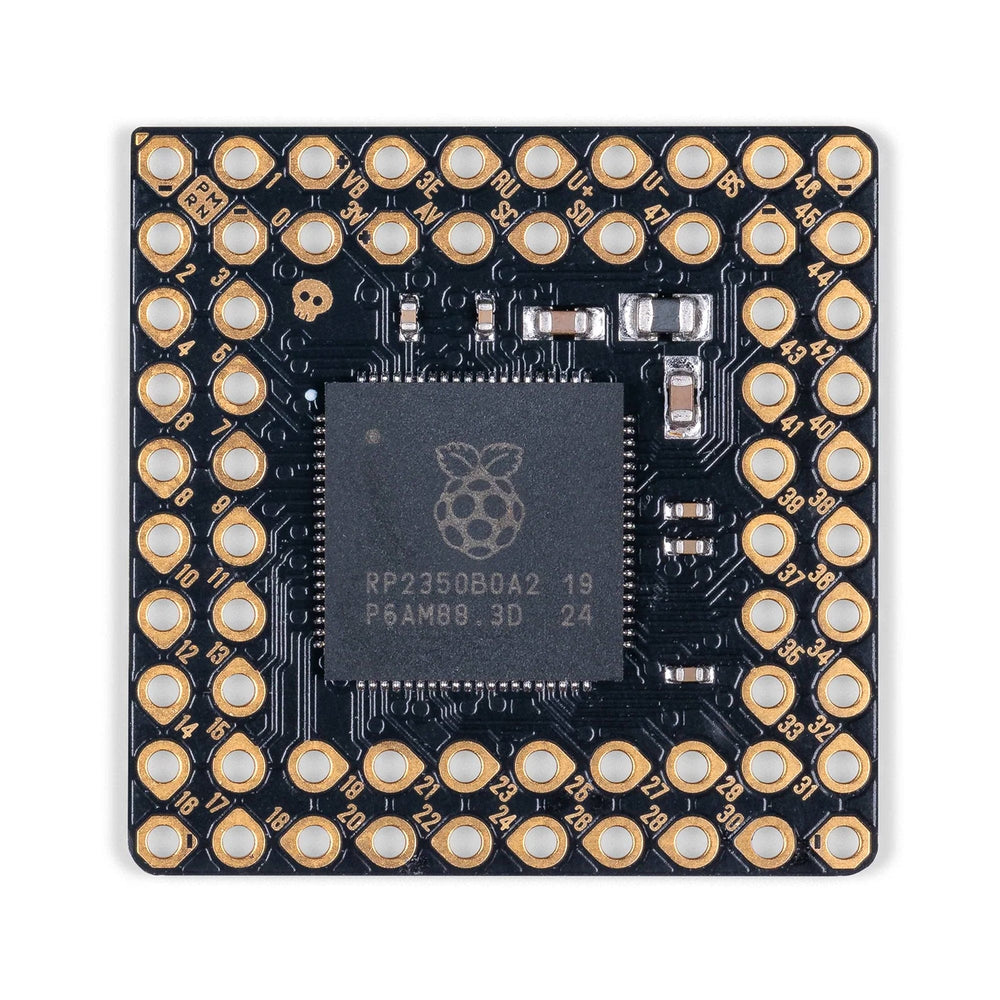
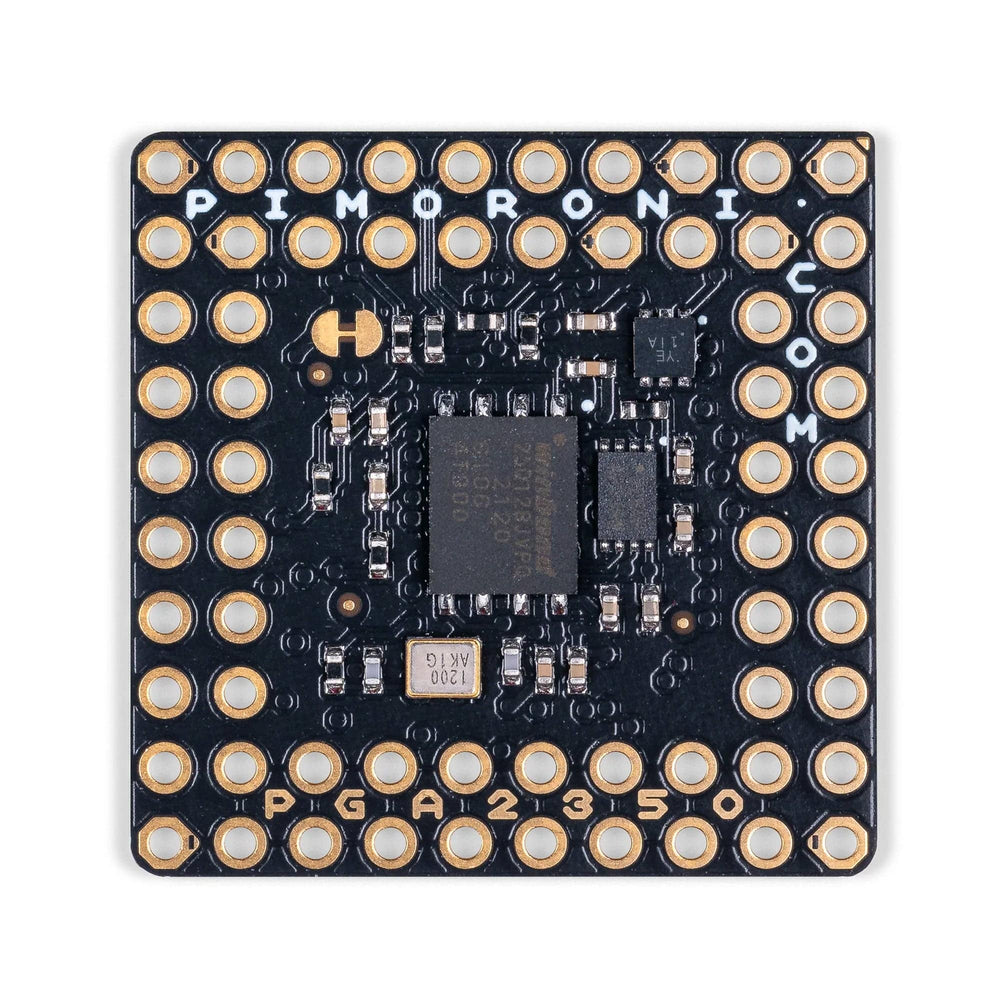
PGA2350 is a compact RP2350 breakout designed to be embedded in projects where space is limited. It contains the components necessary to run the mighty RP2350B chip (that's the crystal, regulator and essential support circuits), a beefy 8MB of PSRAM and a prodigious 16MB of flash storage. Note that it has no LEDs, buttons or USB connectors - you'll need to attach your own USB connector to be able to program it.
All this drastic pruning means you get a small 25.4mm square footprint and a lot of exposed RP2350 pins to play with. 48 of them can be used as general-purpose I/O (that's eighteen more I/O than on a Raspberry Pi Pico!) and 8 are ADC-equipped. We've even managed to squeeze in some tiny pin labels to help identify them.
Header pins are sold separately - you can use standard Pico pin headers (though bear in mind you'll need 64 pins if you want to populate it fully).





